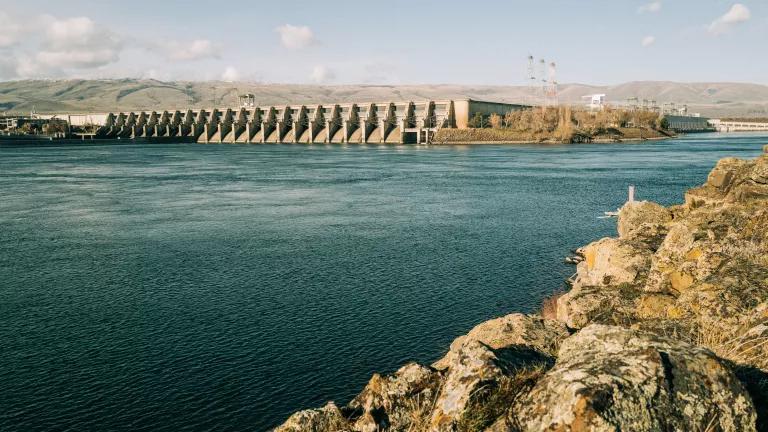EPA Rethinks Water Affordability, Reverses Trump Approach
The EPA is revising a harmful Trump administration policy that would have reinforced existing inequities in access to clean water and sanitation.

UPDATE Feb. 2023: EPA has published a final version of the guidance, which closely tracks the proposal discussed below.
The U.S. Environmental Protection Agency (EPA) is revising a harmful Trump administration policy that would have reinforced existing inequities in access to clean water and sanitation. EPA’s new proposal marks a step in the right direction towards righting those historic wrongs. It aims to expedite investments that benefit environmental justice communities, without making bills for essential sewer service unaffordable to low-income households.
As EPA simultaneously prepares to roll out tens of billions in new federal water infrastructure funding, the agency’s stated commitment to prioritizing disadvantaged communities for receipt of funds can help this new approach succeed.
When antiquated municipal sewer systems dump raw sewage and polluted runoff into local waterways—or back-up sewage directly into streets and basements—health and environmental burdens often fall on communities of color and low-income communities. The Clean Water Act requires them to clean up their act, but these fixes can be expensive and take time to implement. Problems often fester for years or even decades when local systems are unable or unwilling to marshal the financial resources needed for system improvements.
Long “compliance schedules”—sometimes decades long—are driven by obscure EPA guidelines dating to 1997. EPA is proposing to overhaul these guidelines, which are known as the “Financial Capability Assessment” guidance. They are also sometimes referred to (inaccurately) as EPA’s “affordability” guidelines. (Although this particular EPA guidance addresses sewage pollution under the Clean Water Act, many of the same issues arise when drinking water systems are out of compliance with the Safe Drinking Water Act. Drinking water violations, too, fall disproportionately on communities of color and low-income communities.)
It’s just about universally recognized that EPA’s guidance needs to be updated. A primary critique is that it focuses on whether a household with “median household income” would be able to afford compliance costs that get passed on to local residents through utility rate increases. This ignores the much greater hardship that rate increases can cause for lower-income households, who often already struggle to afford basic water and sewer service.
Community and environmental advocates have long pushed for solutions that expeditiously meet Clean Water Act standards without financially burdening people who can’t afford increased utility bills. But water and wastewater utilities (and their allied associations of cities and counties) have long pushed EPA to "protect” low-income households from unaffordable bills by perpetuating the very pollution that harms them.
In the waning days of the Trump administration, EPA granted the utilities their wish. In January 2021, after years of conversation with the utilities (followed by formal public comment on a draft), EPA posted online a “final” revised guidance, which would make it easier for communities with significant low-income populations to get longer Clean Water Act compliance deadlines—up to 25 years or more. But the new guidance didn’t require municipalities to do anything to help people struggling to afford their water and sewer bills. It did nothing to find better ways to achieve simultaneously clean water and affordable bills—to achieve true environmental justice.
Instead, the January 2021 guidance used legitimate concerns about affordability as justification to prolong disadvantaged communities’ exposure to sewage pollution. It also didn’t consider the benefits of cleaner water, only the costs of compliance. And it opened the door wider to weakening clean water standards, not only to extending deadlines to comply with existing standards.
NRDC—with nearly 100 other organizations—objected to the updates when they were first proposed in 2020. In March of last year, joined by a similarly large coalition, we asked the incoming Biden Administration to withdraw the Trump guidance. EPA shouldn’t just look the other way, we argued, when a municipality points to high levels of poverty in its service area. The Clean Water Act should work to remedy, not to perpetuate, a two-tiered system where the wealthy enjoy safe sanitation and clean water and others get second-class service that poses risks to their health and the environment.
Instead of the Trump approach, EPA should be working on every front to eradicate that injustice. We should be investing more resources in underserved areas to solve their water woes; the Biden Administration, with billions in funding from last year’s bipartisan infrastructure package, intends to do just that. These infrastructure investments provide communities with better public health, more job opportunities, and increased resilience to climate change.
At the same time, we also have to protect the customers who are least able to pay. With the right local, state, and federal policies in place, we can solve affordability challenges without sacrificing clean water.
Under President Biden, EPA heard the call to rethink its approach to the Financial Capability Assessment guidance. The agency yesterday proposed a new version that seeks to address some of our concerns. Under the proposal, if a municipality is concerned that clean water compliance costs would drive unaffordable rate increases for low-income households, it must seek to mitigate cost burdens on low-income households without dragging out compliance.
EPA provides a checklist of “financial alternatives” for utilities to consider, which can reduce burdens on low-income households. These include creating “lifeline” rates with a low charge for an initial amount of usage to meet essential needs; capping water bills for low-income households at a percentage of income; offering bill discounts to low-income households; helping low-income customers repair plumbing leaks and replace old, water-guzzling toilets; charging non-residential properties for their fair share of stormwater costs; securing grants and subsidized loans to reduce the costs of capital improvements for all ratepayers; and ensuring that ratepayer revenues aren’t diverted to non-utility purposes.
These are exactly the sorts of things advocates have been urging municipalities and state regulators to consider in New Jersey, for example, in connection with multi-billion dollar plans to control raw sewage overflows. The plans would upgrade sewage systems serving about 20 communities—many of which are poor and majority non-white. But, due to the cost, municipal wastewater systems are seeking compliance schedules of 20 to 40 years, based on EPA’s original 1997 financial capability guidance, which does not require consideration of alternative ways to reduce the burdens on low-income ratepayers.
EPA’s latest action marks a step in the right direction. The proposal is long, detailed, and technical, but we look forward to reviewing it closely and working with partners to provide comments back to the agency.





